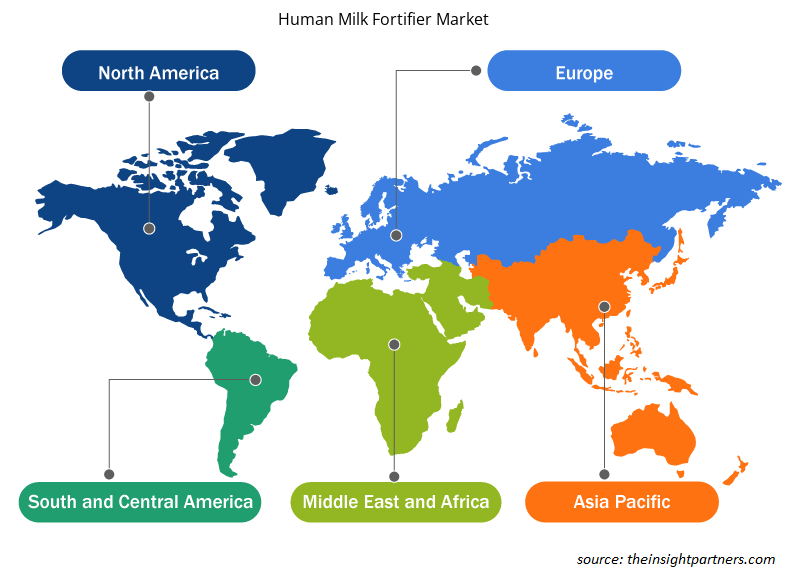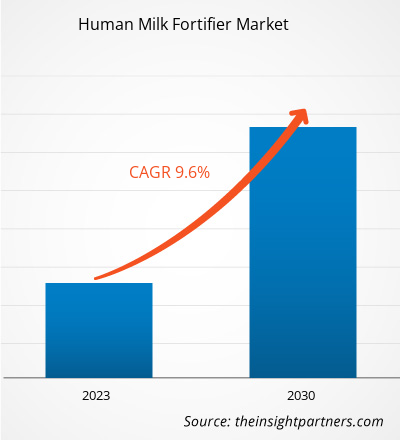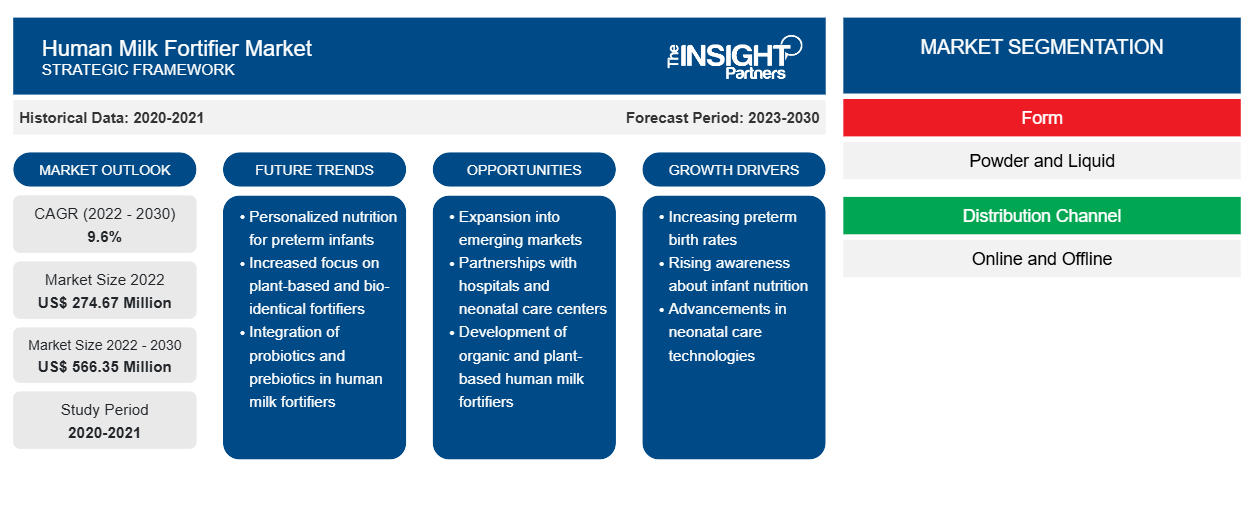[研究报告] 母乳强化剂市场规模预计将从 2022 年的 2.7467 亿美元增长到 2030 年的 5.6635 亿美元;预计 2023 年至 2030 年的复合年增长率为 9.6%。
市场洞察和分析师观点:
母乳强化剂是添加到母乳中的营养补充剂,为婴儿提供额外的热量、电解质和维生素。它通常用于新生儿重症监护室 (NICU) 的早产儿,以确保营养摄入并改善整体发育和生长。此外,体重较低的婴儿也会被开具母乳强化剂。
增长动力和挑战:
近年来,由于生活方式的改变以及糖尿病、高血压等慢性疾病,早产数量有所增加。根据美国疾病控制与预防中心 (CDC) 的数据,2021 年,美国每 10 名新生儿中就有 1 名患有早产。美国的早产率从 2020 年的 10.1% 上升到 2021 年的 10.5%。世界卫生组织 (WHO) 估计,2020 年出生的婴儿约有 1,340 万。早产并发症是五岁以下儿童死亡的主要原因,2019 年导致约 90 万人死亡。早产儿可能有呼吸问题、喂养困难、发育迟缓、脑瘫以及视力和听力问题。
早产数量的增加导致对母乳强化剂的需求激增,以促进婴儿的正常生长发育。许多早产儿需要在母乳中添加额外的营养。他们通常需要额外的蛋白质、钙、磷和盐来强健骨骼和健康器官。母乳强化剂有助于为婴儿提供这些额外的营养。在母乳强化剂中,在喂给婴儿之前会将额外的营养物质添加到母乳中。因此,早产数量的激增促进了母乳强化剂市场的增长。
各国政府已制定了各种与母乳强化剂的生产和使用相关的规则和法规,以确保新生儿的安全并维持产品的质量标准。在加拿大,母乳强化剂受《食品和药品法规》(FDR)的监管。FDR B 部分第 25 章(B.25.019)规则的实施是为了确保在适当的医疗监督下正确销售母乳强化剂。此外,母乳强化剂必须向加拿大卫生部提供上市前提交。B.25.011 节第 (a) 至 (n) 小节规定了新型母乳强化剂的监管要求。在美国,母乳强化剂被归类为豁免婴儿配方奶粉;然而,制造商必须满足美国食品和药品管理局 (FDA) 的要求,以确保营养声明,包括产品附件中列出的每种矿物质和维生素的含量。实施此类法规阻碍了母乳强化剂的生产,抑制了市场增长。
定制此报告以满足您的需求
您可以免费定制任何报告,包括本报告的部分内容、国家级分析、Excel 数据包,以及为初创企业和大学提供优惠和折扣
-
获取此报告的关键市场趋势。这个免费样品将包括数据分析,从市场趋势到估计和预测。
报告细分和范围:
全球母乳强化剂市场按形式、分销渠道和地域划分。母乳强化剂市场按形式分为粉末和液体。母乳强化剂市场按分销渠道分为线上和线下。全球母乳强化剂市场按地域大致分为北美、欧洲、亚太地区、中东和非洲以及南美和中美洲。
节段分析:
根据形式,母乳强化剂市场分为粉末和液体。预计粉末部分在预测期内的复合年增长率会更高。粉末状的母乳强化剂补充并增强了母乳的营养成分。强化母乳是给早产儿或身体虚弱的婴儿开的处方。人们更喜欢粉状母乳强化剂,因为它们便于储存、处理和制备。此外,它们更容易储存和运输,同时比液体产品保质期更长。
根据分销渠道,母乳强化剂市场分为线上和线下。预计在预测期内,线上市场将实现更高的复合年增长率。在线零售店与在家购物的便利性相关。父母可以在任何适合自己的时间浏览和购买母乳强化剂,而无需前往商店。此外,在线平台通常为他们提供广泛的强化剂,让父母可以探索各种选择并选择最合适的产品。此外,母乳强化剂可能在当地或专卖店买不到;在线商店提供更广泛的库存,让消费者更容易找到当地买不到的特定品牌。客户评论和详细的产品信息进一步帮助父母做出更明智的决定。通过阅读使用过该产品的其他父母的评论,他们可以深入了解其有效性和适用性。由于管理成本低于实体店,在线零售商通常提供有竞争力的价格。这可以使寻找经济实惠的选择或比较不同卖家价格的用户受益。此外,一些用户可能更愿意谨慎购买母乳强化剂,因为他们对公开讨论婴儿的健康问题很敏感。在线渠道提供隐私,并允许谨慎购买和交付。
区域分析:
根据地理位置,米粉市场分为五个主要区域:北美、欧洲、亚太、南美和中美以及中东和非洲。2022 年,北美市场价值约为 8582 万美元。预计亚太地区在预测期内的复合年增长率约为 10.4%。随着亚太地区可支配收入水平的提高,越来越多的父母能够买得起高端保健产品,包括母乳强化剂。这促进了市场的增长,因为父母愿意投资于可以改善孩子健康和福祉的产品。此外,亚太地区医疗保健基础设施(包括新生儿重症监护病房 (NICU))的扩张为母乳强化剂市场的增长创造了有利的环境。医院和医疗机构能够更好地为早产儿提供专门护理,从而增加了对母乳强化剂的需求。
母乳强化剂市场区域洞察
Insight Partners 的分析师已详细解释了预测期内影响母乳强化剂市场的区域趋势和因素。本节还讨论了北美、欧洲、亚太地区、中东和非洲以及南美和中美洲的母乳强化剂市场细分和地理位置。

- 获取母乳强化剂市场的区域特定数据
母乳强化剂市场报告范围
| 报告属性 | 细节 |
|---|---|
| 2022 年市场规模 | 2.7467亿美元 |
| 2030 年的市场规模 | 5.6635亿美元 |
| 全球复合年增长率(2022 - 2030 年) | 9.6% |
| 史料 | 2020-2021 |
| 预测期 | 2023-2030 |
| 涵盖的领域 |
按形式
|
| 覆盖地区和国家 |
北美
|
| 市场领导者和主要公司简介 |
|
母乳强化剂市场参与者密度:了解其对业务动态的影响
母乳强化剂市场正在快速增长,这得益于终端用户需求的不断增长,而这些需求又源于消费者偏好的不断变化、技术进步以及对产品优势的认识不断提高等因素。随着需求的增加,企业正在扩大其产品范围,进行创新以满足消费者的需求,并利用新兴趋势,从而进一步推动市场增长。
市场参与者密度是指在特定市场或行业内运营的企业或公司的分布情况。它表明在给定市场空间中,相对于其规模或总市场价值,有多少竞争对手(市场参与者)存在。
在母乳强化剂市场运营的主要公司有:
- 雅培实验室
- NeoLacta 生命科学私人有限公司
- 雀巢公司
- 普罗拉克塔生物科学公司
- 利德凯国际有限公司
免责声明:上面列出的公司没有按照任何特定顺序排列。

- 了解母乳强化剂市场顶级关键参与者概况
行业发展和未来机遇:
以下列出了母乳强化剂市场的主要参与者采取的各种举措:
- 2022 年 1 月,Prolacta Bioscience 在日本推出了母乳强化剂。此次推出旨在进入该国尚未开发的市场并帮助改善新生儿的健康。2020 年 11 月,Lifeblood Milk 和南澳大利亚卫生与医学研究所 (SAHMRI) 与澳大利亚国家科学机构 CSIRO 建立了合作关系。该合作旨在开发母乳强化剂,以改善早产儿的营养和生长。
- 2021 年 9 月,Neolacta Lifesciences Pvt. Ltd 在电子商务平台上推出了其产品,以确保父母可以轻松获得其产品,例如 Neolacta 母乳和 Neolacta MMF(母乳强化剂)。
Covid-19的影响:
由于制造工厂停工、劳动力短缺、供应链中断和金融不稳定,COVID-19 疫情最初影响了全球母乳强化剂市场。COVID-19 疫情导致经济放缓,各行各业受到干扰,抑制了对母乳强化剂的需求。然而,随着各国放松先前实施的限制,企业正在取得进展。此外,各国政府推出 COVID-19 疫苗缓解了局势,导致全球商业活动增加。在解除封锁和行动限制后,包括母乳强化剂市场在内的多个市场都出现了增长。
竞争格局和重点公司:
全球母乳强化剂市场的一些知名参与者包括雅培实验室、NeoLacta Lifesciences Pvt Ltd、雀巢公司、Prolacta Bioscience Inc、Lead Care International Ltd、Raptakos、Brett & Co Ltd、NeoKare Nutrition Ltd、达能公司、Neolac Inc 和利洁时集团。
- 历史分析(2 年)、基准年、预测(7 年)及复合年增长率
- PEST和SWOT分析
- 市场规模、价值/数量 - 全球、区域、国家
- 行业和竞争格局
- Excel 数据集
近期报告
相关报告
客户评价
购买理由
- 明智的决策
- 了解市场动态
- 竞争分析
- 客户洞察
- 市场预测
- 风险规避
- 战略规划
- 投资论证
- 识别新兴市场
- 优化营销策略
- 提升运营效率
- 顺应监管趋势























 获取免费样品 - 母乳强化剂市场
获取免费样品 - 母乳强化剂市场